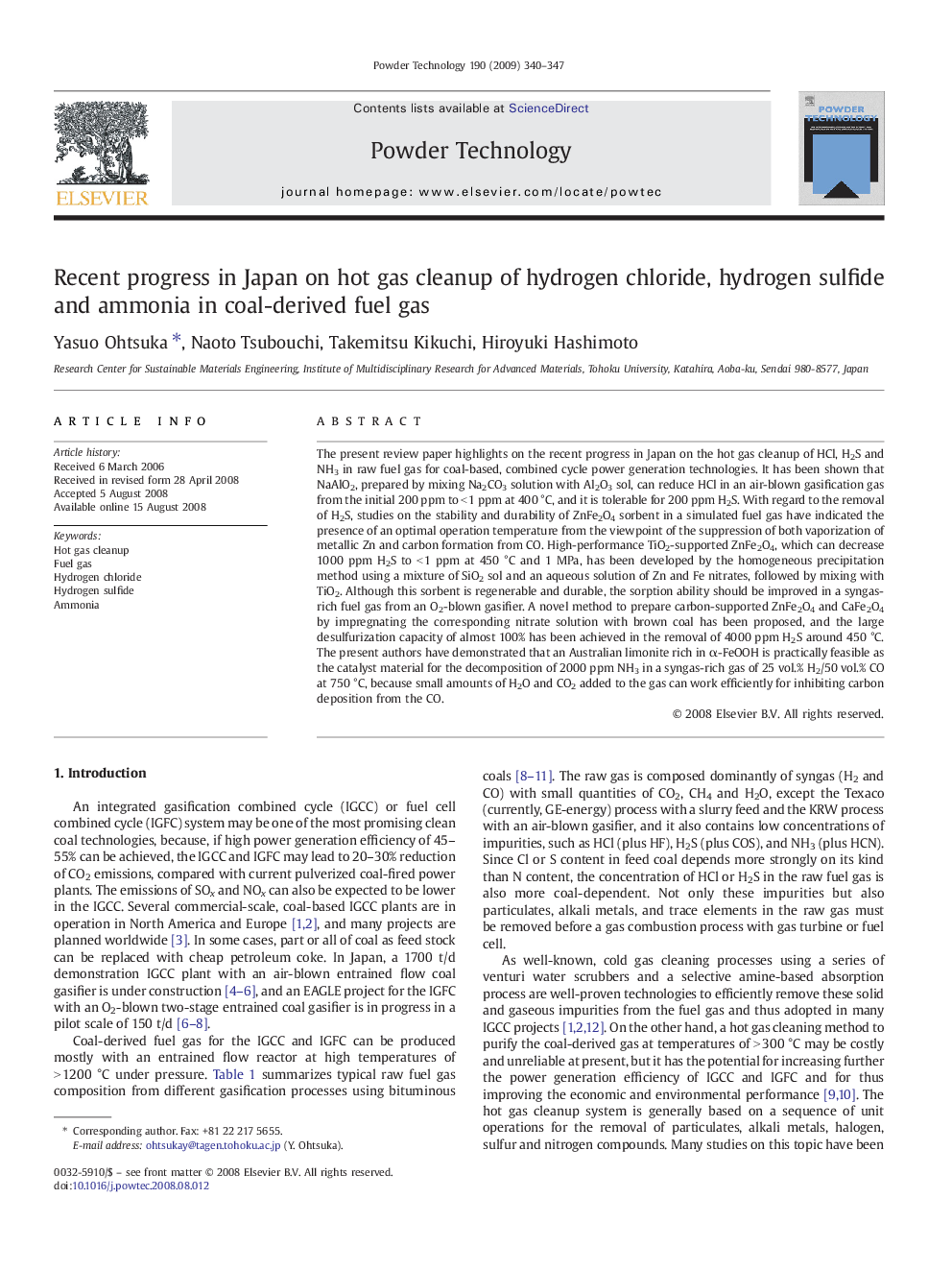| کد مقاله | کد نشریه | سال انتشار | مقاله انگلیسی | نسخه تمام متن |
|---|---|---|---|---|
| 238135 | 465743 | 2009 | 8 صفحه PDF | دانلود رایگان |

The present review paper highlights on the recent progress in Japan on the hot gas cleanup of HCl, H2S and NH3 in raw fuel gas for coal-based, combined cycle power generation technologies. It has been shown that NaAlO2, prepared by mixing Na2CO3 solution with Al2O3 sol, can reduce HCl in an air-blown gasification gas from the initial 200 ppm to < 1 ppm at 400 °C, and it is tolerable for 200 ppm H2S. With regard to the removal of H2S, studies on the stability and durability of ZnFe2O4 sorbent in a simulated fuel gas have indicated the presence of an optimal operation temperature from the viewpoint of the suppression of both vaporization of metallic Zn and carbon formation from CO. High-performance TiO2-supported ZnFe2O4, which can decrease 1000 ppm H2S to < 1 ppm at 450 °C and 1 MPa, has been developed by the homogeneous precipitation method using a mixture of SiO2 sol and an aqueous solution of Zn and Fe nitrates, followed by mixing with TiO2. Although this sorbent is regenerable and durable, the sorption ability should be improved in a syngas-rich fuel gas from an O2-blown gasifier. A novel method to prepare carbon-supported ZnFe2O4 and CaFe2O4 by impregnating the corresponding nitrate solution with brown coal has been proposed, and the large desulfurization capacity of almost 100% has been achieved in the removal of 4000 ppm H2S around 450 °C. The present authors have demonstrated that an Australian limonite rich in α-FeOOH is practically feasible as the catalyst material for the decomposition of 2000 ppm NH3 in a syngas-rich gas of 25 vol.% H2/50 vol.% CO at 750 °C, because small amounts of H2O and CO2 added to the gas can work efficiently for inhibiting carbon deposition from the CO.
Coal-fired power plants have been generating 40% of the world's electricity for more than 30 years. The present review paper highlights on the recent progress in Japan on the hot gas cleanup of HCI, H2S and NH3 in raw fuel gas for coal-based, combined cycle power generation technologies, which can greatly contribute to the efficient reduction of CO2 emissionsFigure optionsDownload as PowerPoint slide
Journal: Powder Technology - Volume 190, Issue 3, 25 March 2009, Pages 340–347